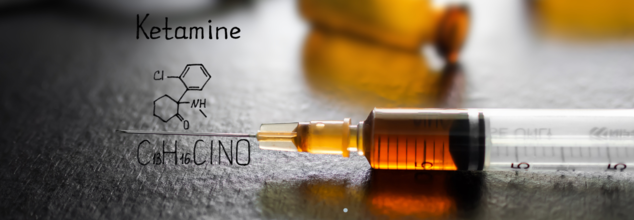- Health Conditions A-Z
- Health & Wellness
- Nutrition
- Fitness
- Health News
- Ayurveda
- Videos
- Medicine A-Z
- Parenting
- Web Stories

Credits: Freepik
All Indian Salts And Sugar Brands Have Harmful Microplastics, Says New Study
A recent study by the environmental research organisation Toxics Links on Tuesday has baffled many Indians. We have all been consuming microplastics all this time in our sugar and salt. Whether the brands are big, small, organic, packaged, or unpackaged, all Indian salt and sugar brands contain microplastics, finds the study.
What are microplastics?
They are solid plastic particles or synthetic fibres of the size between 1 µm and 5,000 µm, or micrometres. They are made of various polymer types, which include polyethylene, polypropylene, polythelene terephthalate and it can lead to various environmental as well as health issues.Some of the health issues associated with the consumption of microplastic are infertility in both males and females, cancers, neurodevelopment disorders, and cardiovascular and kidney diseases.
These particles, though minuscule, can enter the human body via ingestion, inhalation or even direct skin contact. They are found everywhere and often accumulate, break down and eventually integrate into the food chain. This is what makes it a greater threat.
The easiest way of consuming microplastic is through food, with salt being the primary contributor among fruits and vegetables, cited the recent study.
The report, Microplastics in Salt and Sugar stated that the highest concentration of microplastics was found in a branded iodised packaged salt sample.
How was the test conducted?
The researchers conducted lab tests on ten different varieties of the common salt, including table salt, rock salt, sea salt and local raw salt, while five sugar samples purchased online and from local markets were tested.What were the findings?
Out of the ten salts, only two of the samples were unbranded, while only one sugar sample was unbranded.Out of the ten salts, three were packaged iodised salt, three were rock salt, two were organic brands, two sea salt samples and two were local brands.
The study found that the microplastics in sugar and salt were of eight different colours. These were transparent, white, blue, red, black, violet, green, and yellow.
The size and quantity too varied. The smallest was 6.71, while the biggest was 89.15 pieces per kilogram of dry weight and 0.1mm to 5mm respectively.
Forms of microplastics
The report said these were found in the forms of fibres, pellets, films, and fragments. The study also found that the highest concentration of microplastics, at 89.15 pieces per kilogram of dry weight was found in the packaged iodised salt sample. While the lowest, at 6.70 pieces per kilogram of dry weight was found in an organic rock salt sample.For the five sugar samples, the organic sugar sample had the lowest amount og microplastic at 11.85 pieces per kilogram, whereas the highest was at 68.25 pieces per kilogram in a non-organic sugar sample.
Here too, the sizes varied. In sugar sample, the scale raged from 01.mm to 5mm, and were found in the form of fibres, films and pellets.
Sources of microplastic
In salt, it comes from the plastic waste, clothing fibres, and microbeads in personal care products. The report also said that the distribution depends on various factors, including source of salt, location of its production, and the surrounding environment.While for sugar, the direct sources include sugar cane processing, purification, refinement and packaging of sugar. There are indirect sources too, that can be both agricultural and industrial, said the report.
On an average, an Indian consumes 10.98 grams of salt per day, which is more than double the World Health Organization’s recommended limit of 5 grams per day, the study said. “With the per capita consumption of sugar of approximately 10 spoons per day, average Indian eats almost 18 kilogram of sugar per year.”

Credits: Canva
PBS To Cover Ketamine-Based Nasal Spray For Treatment-Resistant Depression
A new ketamine-like nasal spray will soon be available at a subsidised cost in Australia to help thousands living with treatment-resistant depression. The medication, called Spravato (esketamine), has been added to the Pharmaceutical Benefits Scheme (PBS), marking a significant shift in how the country approaches difficult-to-treat mental health conditions.
What Is Esketamine and How Does It Work?
Esketamine is chemically related to ketamine, a well-known anaesthetic that gained notoriety for recreational use in rave culture. However, in controlled medical settings, this compound is offering new hope for patients who have not responded to traditional antidepressants.
Unlike older medications that target serotonin – a “feel-good” chemical in the brain – esketamine works on a different neurotransmitter called glutamate. This chemical is believed to play a key role in restoring neural connections that influence mood regulation. The result is often a much faster response, with some patients feeling relief within hours instead of weeks or months.
Why It Matters: A Breakthrough After Decades
Esketamine is the first government-funded drug for major depression in over 30 years that works via a new mechanism. While most antidepressants developed since the 1980s have focused on serotonin or other monoamines, esketamine offers an alternative path by targeting glutamate and related brain circuits.
For those who have tried multiple medications without success, this drug represents a long-awaited option. Clinical trials in Australia show that nearly 50% of patients with treatment-resistant depression reported significant improvement after using esketamine.
Who Can Access It and What Will It Cost?
Starting Thursday, up to 30,000 Australians will be able to access Spravato through the PBS. Patients will pay $31.60 per dose, or $7.70 for pensioners and concession card holders. However, this does not include additional healthcare and administrative fees. Because of safety requirements, the drug must be administered under supervision at certified treatment centres, which will add to the overall cost.
Despite these extra expenses, making esketamine available through PBS is expected to reduce financial barriers and give more Australians access to potentially life-changing care.
Why Esketamine Stands Out
Since receiving approval from the US Food and Drug Administration (FDA) in 2019, esketamine has been used in hospitals and clinics across America, particularly in emergency care for severe depression. Unlike some drugs that sedate or numb emotions, esketamine is reported to alleviate core depressive symptoms — including intense feelings of hopelessness and suicidal thoughts — without dulling awareness.
Mental health experts say this rapid effect can be life-saving in critical cases where waiting for standard medications to take effect is not an option.
A Step Forward After Long Delays
The inclusion of Spravato in the PBS comes after a four-year wait and four separate funding submissions. The listing is seen as a major win for mental health advocates and patients who have pushed for broader access to advanced treatments.
While it may not work for everyone, esketamine opens a new chapter in treating depression — one focused on faster, more targeted relief for those who need it most.

Credit: Canva
King Charles Opens Up About His Cancer Treatment, Calls Himself 'One Of The Statistics'
British King Charles recently reflected on his experience with cancer, saying it brought into "sharp focus the very best of humanity", while acknowledging that each new case is "a daunting and at times frightening experience" for those receiving a diagnosis and for their loved ones. The British monarch was diagnosed with an enlarged prostate gland in February last year, after which he has been getting regular treatments and receiving outpatient care. Despite the diagnosis at 77 years, he has remained positive about his treatment and has continued to perform some of his constitutional duties, such as paperwork and private meetings.
King Charles's Personal Message To People
In a personal written message, released to coincide with a Buckingham Palace reception celebrating organisations that help people with the disease, he described himself as one of the "statistics" among the 390,000 who "sadly" receive a cancer diagnosis in the UK each year. He said it "can also be an experience that brings into sharp focus the very best of humanity". Notably, he told the representatives of the cancer charity that they have the British royal family's "deepest admiration."
Dame Deborah James Is My Inspiration
King Charles hailed the late Dame Deborah James as an inspiration, quoting her final message and encouraging everyone to follow her example. "Find a life worth enjoying; take risks; love deeply; have no regrets; and always, always have rebellious hope." A royal source said there was no update on the king’s condition or treatment, but that it continued in a "very positive direction", reflected in his "very full" national and international diary. They described the words and subject of the message as "deeply personal" for the king.
While Buckingham Palace has not made an announcement clarifying the type of cancer the 76-year-old monarch has been battling but it is suspected that he might have prostate cancer. As described by UK NHS, prostate cancer is a type of cancer that occurs when malignant cells form in the prostate gland, which is a walnut-sized gland in the male reproductive system. Prostate cancer treatment guidelines have shifted their path a bit in recent years, with many men opting for active surveillance rather than immediate treatment for slow-growing tumours. However, about 50% of men on "watchful waiting" will require further treatment within 5 years because of the tumour progression. This is what triggered many researchers to aim and identify whether dietary modifications, specifically increasing omega-3 fatty acids, could prolong this surveillance period and slow down the tumour progression.

Credits: Canva
Hajj Pilgrims Must Get Meningitis Vaccines: UKHSA
The UK Health Security Agency (UKHSA) has urged travellers to the Kingdom of Saudi Arabia (KSA) for Umrah and the upcoming pilgrimages to ensure they are vaccinated against meningococcal disease with the MenACWY vaccine. This notice has been issued in the backdrop of the ongoing outbreaks of serogroup W (MenW) disease, which is associated with travel to KSA.
As of now, UKHSA has confirmed 5 cases of MenW disease between February and March 2025 in people who had recently returned from KSA or had close contacts with those who returned to England and Wales.
What Is Serogroup W (MenW) Disease?
As per the 2014 study published in Cambridge University Press, these strains have been emerging throughout the current century with most of the isolates belonging to the sequence type (ST11)/electrophoretic type (ET37) clonal complex (ST11/E37 CC). This has been particular since the international outbreak following Hajj 2000.
Meningococci are capsulated bacteria. The international emergency was first reported following the annual Hajj season in Saudi Arabia in March 2000. This is a serious bacterial infection that can lead to severe illness and even death. It is characterized by the onset and can manifest in various ways, including meningitis, septicemia and pneumonia. MenW IMD has increased in the recent years.
What Are The Symptoms?
It can start with a high fever, headache, stiff neck, vomiting, and a petechial or purpuric rash.
In some cases there could be atypical presentations too, especially when the patient has pneumonia, septic arthritis, and upper respiratory or ophthalmological symptoms.
A "2013 strain" is also associated with gastrointestinal symptoms like diarrhea ad vomiting.
What Happens In This Disease?
Invasive meningococcal disease is rare, however, it is a serious condition. What happens here is that the lining of the brain and spinal cord gets inflamed and thus it can kill people or leave them with life-changing disabilities.
What Are Pilgrims Asked To Do?
Travellers performing Hajj or Umrah, as well as seasonal workers, must show proof of a valid MenACWY vaccination certificate, issued between 10 days and 3 to 5 years before arriving—depending on the type of vaccine they received. The World Health Organization (WHO) and the National Travel Health Network and Centre (NaTHNaC) also recommend that all travellers to Saudi Arabia consider getting the quadrivalent MenACWY vaccine, especially in light of the ongoing MenW outbreak.
What Does The Expert Say?
Dr Shamez Ladhani, who is a Consultant Epidemiologist at UKHSA said, "The MenACWY vaccination is essential for pilgrims travelling to KSA for Umrah and Hajj, particularly given recent cases among UK returnees and their families. Meningococcal disease can be fatal and may leave survivors with serious lifelong conditions including hearing loss, brain damage and limb amputations. Pilgrims should ensure vaccination at least ten days before travel and remain vigilant for symptoms like sudden fever, severe headache, stiff neck, or rash. If you or anyone at home becomes unwell with any symptoms of meningitis within two weeks of returning from Saudi Arabia, contact your GP or NHS 111, mentioning your recent travel history, or dial 999 in case of emergency."
The UKHSA has also advised the following guideline for UK travellers:
- avoid consuming raw or undercooked animal products
- avoid contact with camels and animal waste
- practise good hygiene, particularly washing hands after visiting farms, barns or markets
© 2024 Bennett, Coleman & Company Limited

